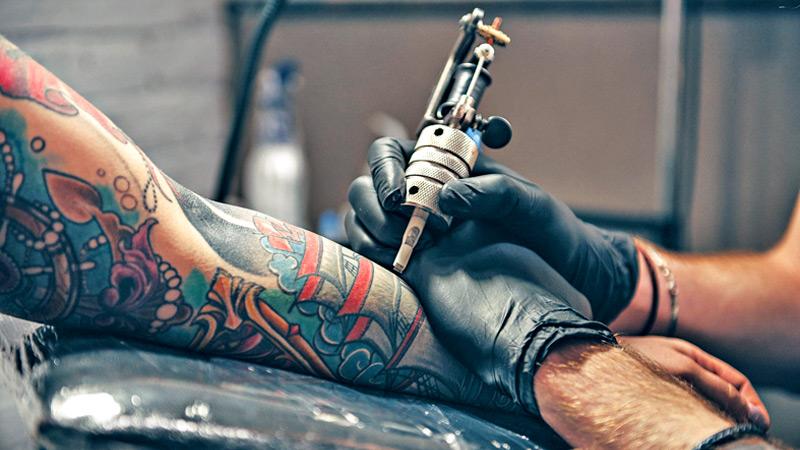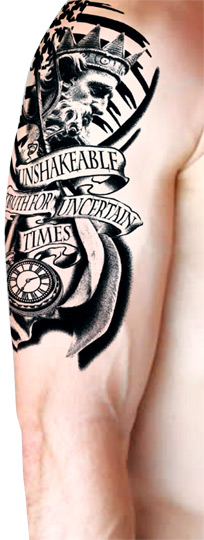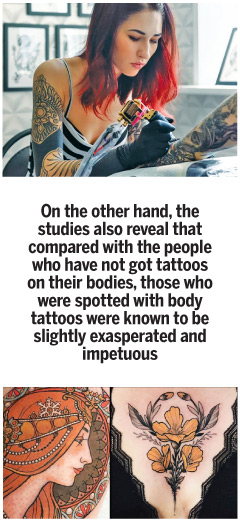
I prefer shunning the boilerplate. I tell myself that there are sometimes where you have to keep a low profile with the stereotypes.
 Body art or tattoos are not strange phenomena; they have now become a norm. At the gym, the golf court and the pub, your eyes may have a glimpse of a whopping medley of designs inked on the skin that have the potential of epitomizing and equating a spectrum of human creativity.
Body art or tattoos are not strange phenomena; they have now become a norm. At the gym, the golf court and the pub, your eyes may have a glimpse of a whopping medley of designs inked on the skin that have the potential of epitomizing and equating a spectrum of human creativity.
Research indicates that approximately 20% of the adults in the United Kingdom are now seen with at least one tattoo and it is projected that this proportion will continue to grow. It is axiomatic that based on their enriching and historical element, art forms are typically presumed and implied.
It is believed that our primogenitors have perceived skin as a canvas for ages. Some 32 years ago, two hikers discovered a corpse of a man who had died some 5,300 years ago frozen in a glacier, near the city of Bolzano in Italy; it is supposed to be the oldest body art that comes from ‘Otzi’.
The most interesting thing is the fact that this particular corpse had tattoos that had geometric designs, running across its lower legs, lower back, left wrist as well as in that of its torso. It is also noted that ancient tattoos that are said to be as old as around 3,000 years had been found in the human remains in countries such as Chile, China, Russia, and Egypt.
Meanwhile, as further remarked by the researchers of this specific discipline, it is evident that there involves a psychological element behind tattoos. As per one theory, highlighted by researchers, it has got its own converting and reconstituted intent and bourn. You would have required to possess a sturdy and vigorous immune system to survive the risk of being vulnerable to infections once your skin is inked.
It is further claimed that if you managed to survive, it could demonstrate that you had robust genes to pass onto your offspring. Correspondingly, tattoos acted as a token of your fitness that make you sexually attracted to your future mates: fiancée and fiancé.
“Painted ones”
However, some scholars claim that tattoos can easily be understood from a social and cultural perspective rather than trying to define them in terms of an evolutionary perspective. In the meantime, some historians remark that the history of English tattoos runs back to the time of the indigenous Britain where it sets its time on the Caesar’s invasion. It is further revealed that the name Britain is presumably to have derived from the Celtic word “Pretani”; it means “painted ones” or “tattooed folk”.
Following the exploration of the Pacific by Captain Cook, a British explorer, Cartographer and naval officer, tattoos received a remarkable popularity. This development was encouraged by the sailors who got themselves inked designed by the parties with whom they met during the voyages.
Following the invention of the first electric tattooing machine in the latter part of the 19th century, tattoos enjoyed an unparalleled popularity predominantly among the privileged upper classes in Britain. Historians note that the upper classes had considered having a tattoo was a form of expressing their social grace, elegance, savoir faire and savoir vivre.
 Some researchers are of the view that towards the latter part of the 90s and the beginning of the new millennium, tattoos have potentially become more intense and profound with regard to the changing attitude of the human beings.
Some researchers are of the view that towards the latter part of the 90s and the beginning of the new millennium, tattoos have potentially become more intense and profound with regard to the changing attitude of the human beings.
It is argued that the modern culture is prescriptive over what the people are able to do with their bodies. This development may have links with the attitude of the society on elements such as weight, fitness as well as the form of people’s explanation about their gender and sexuality. Tattoos are said to be a form of art that have given an autonomy for people to exercise their freedom of enjoying the ownership of their lives whereas they can have an influence on their flesh.
Studies
A series of studies, conducted over the past couple of decades indicate that the element of someone’s personality has certain significant things to do with the tattoos. In this context, comparisons between the people with and without tattoos had been made where a wave of both positive and negative consequences were identified.
A positive vibe, noticed among the people with tattoos is the fact that once you get your tattoos done, you would feel that you are very close to your body. On the other hand, the studies also reveal that compared with the people who have not got tattoos on their bodies, those who were spotted with body tattoos were known to be slightly exasperated and impetuous.
However, the studies further identified that based on the circumstances, the said development may vary from person to person.
Some psychotherapists define that tattoos are “windows to the psyche” and they would probably fly far above the aesthetic value, engulfing them. There is no hyperbole to say that tattoos are able to disseminate an idea that is not possible to be translated into words.
Tattoos can also be a way through which you can approach a conversation regarding other significant issues or events in your life. For a considerable number of people, tattoos may reflect on some significant life experiences; the solidity and robustness that are derived through it.
Such endurance and tenacity may include sorrow and tribulation. Those feelings are translated into the art form of tattooing by means of designs, exhilarated, and energized by science or mathematics - the materials and phenomena which are bulkier than that of the material world.
